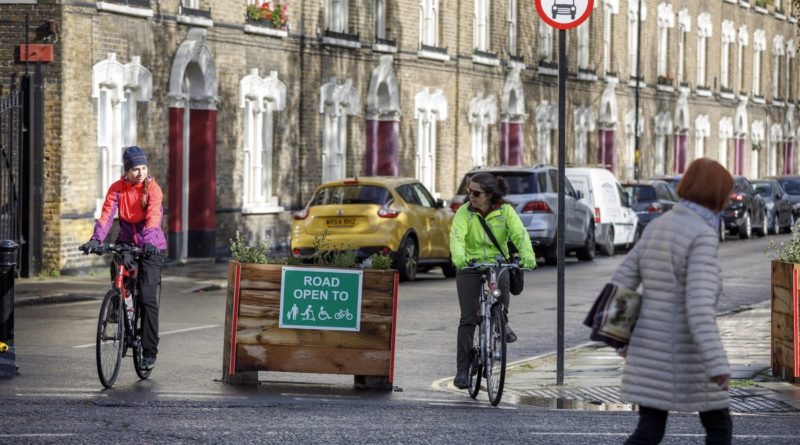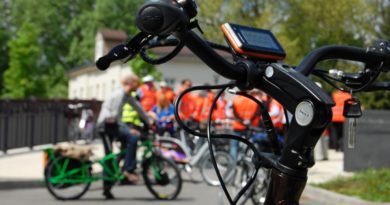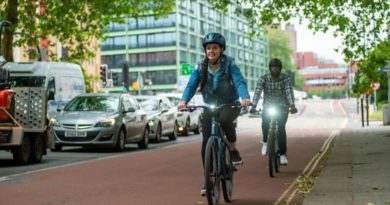Low traffic neighbourhoods successfully reduce motor traffic
The largest ever study of low traffic neighbourhoods in London demonstrates overwhelming success in reducing motor traffic.
Climate charity Possible and the University of Westminster’s Active Travel Academy have released the most comprehensive study of low traffic neighbourhoods across London ever showing that streets within LTNs experience substantial, overall falls in traffic and, implying significant changes in street use.
The mean average decrease in motor traffic on roads within LTNs (a reduction of 815 motor vehicles) was shown to be almost ten times higher than average increases in motor traffic on boundary roads (an increase of 82 motor vehicles), suggesting that LTNs are creating a substantial overall reduction in traffic.
Across London the mean percentage reduction of traffic on streets within LTNs was 46.9%. This has resulted in many more streets experiencing under 1,000 motor vehicles passing through them a day, implying that there may be a qualitative change in the local environment that has meant an increase in walking and cycling.
The study also analysed the impact on boundary roads surrounding LTNs. Overall 47% of boundary roads surrounding LTNs saw a decrease in traffic and 53% saw an increase. Average motor traffic counts showed that on boundary roads, traffic changed relatively little – with a mean average increase of just 82 motor vehicles per day; a less than 1% increase on the mean average of 11,000 vehicles that pass through boundary roads on a typical day.
Acknowledging this small increase, the report goes on to note the importance of the substantial variations, in regard to both increases and decreases in traffic on boundary roads, between individual LTN schemes. These variations, the report points out, are not likely to be primarily caused by LTNs but could, instead, be caused by other contextual factors such as major local works or wider background trends.
For example, the report notes that in Newham increases in motor traffic may well be due to Olympic legacy-related development – particularly increasing motor traffic on boundary roads. This leads the report to conclude that with the installation of an LTN, there should be no expectation of an increase or decrease in motor traffic on boundary roads.
The report emphasises the need to consider that boundary roads are still highly likely to still be polluted, unsafe, or difficult to cross or cycle on. Removing LTNs is unlikely to alleviate these issues so it is vital for local authorities to consider other measures that could. For instance, expanding low emission zones, road user charging, increasing the number of bus lanes and public transport provision, urban greenery, widening pavements, and protected cycle lanes could all make a contribution.
Possible is calling on local authorities to use the report’s findings to introduce more LTNs and to challenge misinformation about the direct impacts on boundary roads. They are also calling for further measures to address traffic on these boundary roads.
 Hirra Khan Adeogun, Head of Car Free Cities at climate charity Possible: “This report shows that low traffic neighbourhoods are having a verifiable, positive impact for the people living on these streets. But, importantly, it shows that they have no consistent impact on boundary roads. In a climate crisis, we need our policymakers to make bold, data-led decisions; this report gives them that information. What we need now is action to drive down traffic, make our cities happier and healthier, and directly address the climate crisis.”
Hirra Khan Adeogun, Head of Car Free Cities at climate charity Possible: “This report shows that low traffic neighbourhoods are having a verifiable, positive impact for the people living on these streets. But, importantly, it shows that they have no consistent impact on boundary roads. In a climate crisis, we need our policymakers to make bold, data-led decisions; this report gives them that information. What we need now is action to drive down traffic, make our cities happier and healthier, and directly address the climate crisis.”
Asa Thomas, PhD Researcher at the Active Travel Academy at the University of Westminster and lead author of the study: “This study finds that most streets within LTNs see reductions in most traffic, improving the experience of walking and cycling. Two-thirds of these now have vehicle flows below 1000 vehicles a day, a rough threshold for a quiet pedestrian friendly street, compared to only two-fifths before. What’s more, there is little indication of systematic displacement of this traffic to boundary roads.”
 Prof Rachel Aldred, Director of the Active Travel Academy at the University of Westminster and co-author of the study:
Prof Rachel Aldred, Director of the Active Travel Academy at the University of Westminster and co-author of the study:
“The research indicates there has been overall ‘traffic evaporation’ as a result of these schemes, as the mean average reduction in motor traffic on internal roads is around 10 times higher than the mean average increase on boundary roads, adjusting for background trends.
This suggests that not only do LTNs have substantial benefits inside their boundaries, but they can also contribute to wider traffic reduction goals.”
The full “The truth about low traffic neighbourhoods” report can be found here.



